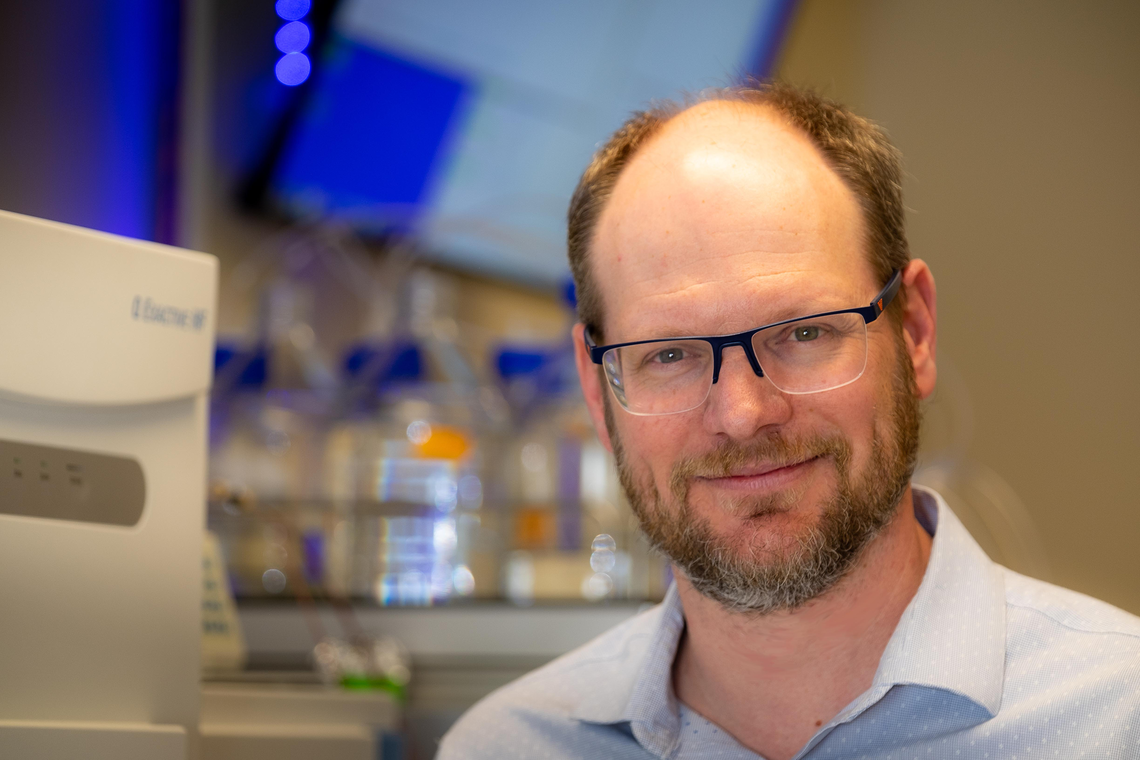
U of C researchers develop protein identification-based diagnostic testing for COVID-19
By Ava Zardynezhad, June 20 2020—
With Canada moving towards the relaunch phases of businesses and activities across all provinces, strict safety measures involving lower testing thresholds are being put in place. With previous concerns about testing capacity and supply limitations, scientists are constantly seeking faster, easier, more accessible diagnostic tests for the novel coronavirus. Some of these efforts have come out of the University of Calgary, most recently from Ian Lewis, assistant professor of Biological Sciences and Alberta Innovates Translational Health Chair, alongside his team, who have been developing a rapid protein-based diagnostic tool using mass spectrometry.
Currently, most diagnostic tests for the virus are PCR-based (polymerase chain reaction), which is a technique that relies on studying viral genetic material by “amplifying” — making myriads of copies of — the virus’s genetic material from collected patient samples. The amplification of this genetic material requires various reagents, but “unfortunately, the COVID-19 pandemic has created global shortages in the reagents required for these tests,” according to Lewis.
“Across the world, COVID-19 testing has been hampered by these supply chain limitations. Our new approach does not use any of these reagents, and therefore offers an alternative, orthogonal approach for detecting the virus,” Lewis says.
This new approach relies on the identification of protein fragments that are specific to the virus, using a mass spectrometer. Particles present in patient swab samples are fragmented by the mass spectrometer, and these fragments are sorted by the ratio of their mass to charge, which allows for the identification of the chemical nature of these molecules.
“We can see a whole mess of things in the sample — pieces of patient proteins, cells, and mucous — but we can also see discrete bits of the virus,” says Lewis. “There are a couple of these “bits” that appear to be very specific to SARS-CoV-2. We are running tests right now to make sure that these fragments aren’t present in samples from healthy people, or in samples from people with other types of infections, such as the flu.”
It is important that the protein fragments detected are specific to the virus at hand and that they can be recognized by equipment readily available to diagnostic labs at hospitals. Lewis has high hopes for this method as it dodges certain limitations of the PCR-based diagnostic, such as shortage of reagents and limitations in its capability of functioning in high volume settings, especially in the light of the increased demand for rapid community testing that is to be expected in the coming months.
Currently, Lewis and his team are working on improving their technique and their equipment. However, there are limitations working against them. Currently, only laboratories with a biosafety level three are able to “concentrate and replicate” the novel coronavirus. The Lewis lab, being a biosafety level two laboratory, is limited on this front. Although, they are authorized to study the virus, and are safely operating under a Critical Research Designation from U of C, and working in tandem with level three labs at the University of Alberta. However, to address this constraint, they are currently developing a Viral Containment Device (VCD), which will enable safe culturing of the virus. Lewis explained that the VCD is being developed “specifically to enable high-throughput drug screening studies,” but he believes that the device will also help other efforts and provides safe grounds for studying the biological foundation of the virus. He also hopes that the device will “allow hundreds more researchers and small businesses across Canada to work on COVID-19, and we hope that it will radically accelerate the pace of drug development.”
Over the past few months, the response to the COVID-19 pandemic has proven to be a global effort. There has been an emergence of bodies of research and findings on preprint sites, as well as open source applications and databases, which have been central to advancing the global response to the virus. This global co-operation is very much present at the Lewis lab.
“Our work at the University of Calgary involves a large group of experts from across Canada and the United States. These local, national, and international partnerships are at the foundation of all of our research initiatives,” says Lewis. However, the assemblage of knowledge, expertise, and technology at the University of Calgary has helped the institution excel in research on COVID-19 response in the recent months.
“These collaborations have coalesced at the University of Calgary because we have a truly unique environment to develop solutions to the COVID-19 crisis. We have state-of-the art analytical labs and engineering tools available through the Calgary Metabolomics Research Facility, direct access to Alberta’s healthcare system through Alberta Precision Laboratories, and resources such the Alberta Precision Exchange (APEX) which is a program dedicated to translating lab-bench innovations into real-world clinical tools. There’s nowhere else in the world with this constellation of resources, and we are uniquely poised to very rapidly build effective tools for fighting COVID-19.”
